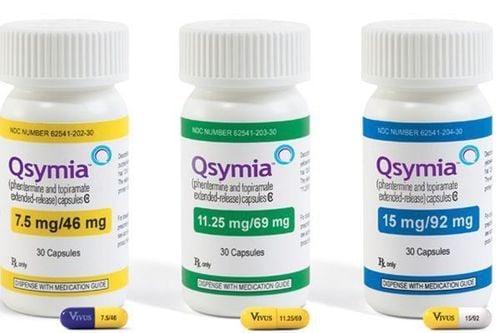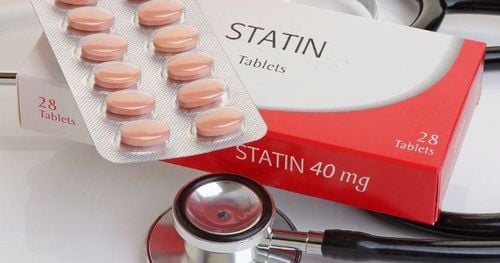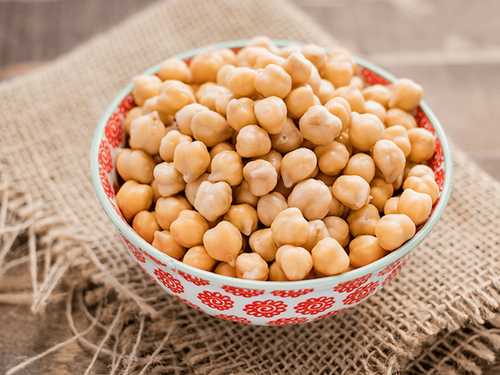This is an automatically translated article.
Whole green beans are sometimes called string beans, snap beans, or wax beans. There are different types of green beans: more than 130 are known. Chickpeas are enjoyed for their mild, sweet flavor and crunchy texture. Usually available year-round, green beans are in season in the summer. The following article will talk about the nutritional composition of green beans.Chickpeas are native to North, South and Central America. However, today they grow all over the world. They grow year-round, which means you'll find them in grocery stores no matter what season it is. However, their harvest season is from May to October, you can easily find them at local farmers markets.
Green beans are a healthy, inexpensive, versatile, easy-to-find source of carbohydrates, protein, fiber and micronutrients. You can even grow them yourself. Nutrition varies depending on how you prepare them, but in general, beans are a healthy addition to your diet: they're very low in fat, cholesterol, sodium or sugar.
1. Nutritional value
Nutritional composition in 100 grams of fresh green beans:| CHẤT DINH DƯỠNG | ĐƠN VỊ | GIÁ TRỊ /100GAM |
| Nước | g | 90,32 |
| Năng lượng | kcal | 31 |
| Năng lượng | kJ | 131 |
| Chất đạm | g | 1.83 |
| Tổng lipid (chất béo) | g | 0,22 |
| Tro | g | 0,66 |
| Carbohydrate | g | 6,97 |
| Chất xơ | g | 2,7 |
| Tổng số đường | g | 3,26 |
| Sucrose | g | 0,36 |
| Glucose (dextrose) | g | 1.51 |
| Fructose | g | 1,39 |
| Đường lactose | g | 0 |
| Maltose | g | 0 |
| Galactose | g | 0 |
| Tinh bột | g | 0,88 |
| KHOÁNG CHẤT | ||
| Canxi, Ca | mg | 37 |
| Sắt, Fe | mg | 1,03 |
| Magie, Mg | mg | 25 |
| Phốt pho, P | mg | 38 |
| Kali, K | mg | 211 |
| Natri, Na | mg | 6 |
| Kẽm, Zn | mg | 0,24 |
| Đồng, Cu | mg | 0,069 |
| Mangan, Mn | mg | 0,216 |
| Selen, Se | µg | 0,6 |
| Florua, F | µg | 19 |
| VITAMIN | ||
| Vitamin C, tổng số axit ascorbic | mg | 12,2 |
| Thiamin (vitamin B1) | mg | 0,082 |
| Riboflavin | mg | 0,104 |
| Niacin | mg | 0,734 |
| Axit pantothenic | mg | 0,225 |
| Vitamin B6 | mg | 0,141 |
| Folate (vitamin B9), tổng cộng | µg | 33 |
| Axít folic | µg | 0 |
| Folate, thực phẩm | µg | 33 |
| Folate, DFE | µg | 33 |
| Choline, tổng số | mg | 15.3 |
| Betaine | mg | 0,1 |
| Vitamin B12 | µg | 0 |
| Vitamin B12, được bổ sung | µg | 0 |
| Vitamin A, RAE | µg | 35 |
| Retinol | µg | 0 |
| Carotene, beta | µg | 379 |
| Carotene, alpha | µg | 69 |
| Cryptoxanthin, beta | µg | 0 |
| Vitamin A, IU | IU | 690 |
| Lycopene | µg | 0 |
| Lutein + zeaxanthin | µg | 640 |
| Vitamin E (alpha-tocopherol) | mg | 0,41 |
| Vitamin E, được bổ sung | mg | 0 |
| Vitamin D (D2 + D3) | µg | 0 |
| Vitamin D | IU | 0 |
| Vitamin K (phylloquinone) | µg | 43 |
| Tryptophan | g | 0,019 |
| Threonine | g | 0,079 |
| Isoleucine | g | 0,066 |
| Leucine | g | 0,112 |
| Lysine | g | 0,088 |
| Methionine | g | 0,022 |
| Cystine | g | 0,018 |
| Phenylalanine | g | 0,067 |
| Tyrosine | g | 0,042 |
| Valine | g | 0,09 |
| Arginine | g | 0,073 |
| Histidine | g | 0,034 |
| Alanine | g | 0,084 |
| Axit aspartic | g | 0,255 |
| Axit glutamic | g | 0,187 |
| Glycine | g | 0,065 |
| Proline | g | 0,068 |
| Serine | g | 0,099 |
| (+) - Catechin | mg | 0 |
| (-) - Epigallocatechin | mg | 0 |
| (-) - Epicatechin | mg | 0 |
| (-) - Epicatechin 3-gallate | mg | 0 |
| (-) - Epigallocatechin 3-gallate | mg | 0 |
| (+) - Gallocatechin | mg | 0 |
| Hương vị | ||
| Apigenin | mg | 0 |
| Luteolin | mg | 0,1 |
| FLAVONOLS | ||
| Kaempferol | mg | 0,5 |
| Myricetin | mg | 0,1 |
| Quercetin | mg | 2,7 |
2. Health benefits
2.1. May help prevent cancer Eating more chickpeas may also reduce the risk of colorectal cancer. This legume is rich in various bioactive compounds that help protect against cancer. Their undigested carbs are fermented by gut bacteria, leading to anti-inflammatory activitiesThis legume also has a low glycemic index, which has also been linked to a low cancer risk. Chickpeas contain saponins, gamma-tocopherol and phytosterols, all of which are compounds with anti-cancer properties
Green beans are high in chlorophyll, which also plays a role in preventing cancer. Chlorophyll binds to certain compounds that can cause cancer, thereby interfering with their absorption in the digestive tract. This may prevent cancer
2.2. Good for the Heart Green beans are truly a heart-friendly vegetable. They're not just a great source of cholesterol-lowering fiber; Plus, they provide the antioxidant vitamins A and C that actually help ward off the oxidation of cholesterol, a precursor to arterial plaque and cardiovascular disease. In addition, they are an excellent source of potassium as well as magnesium to stabilize blood pressure levels.
They also contain vitamin B12, which, together, helps reduce plasma homocysteine levels. Homocysteine is a particular amino acid present in the body, where elevated levels have been linked to metabolic cardiovascular disease. The magnesium content in chickpeas also plays a significant role in maintaining heart health.
2.3. Diabetes Control Clinical trials have shown that chickpeas can induce beneficial metabolic responses in patients with diabetes.
Although vegetables are always said to be healthy, starchy vegetables are not recommended for people with diabetes. Green beans do not contain starch or contain very little starch. They contain fewer carbs and are considered an ideal addition to a diabetic diet.
Eating a cup of beans a day, along with a low-glycemic diet, can help lower blood sugar and even reduce the risk of heart disease in people with diabetes.

Ăn đậu xanh có thể giúp bạn kiểm soát bệnh tiểu đường
In green beans contain both soluble and insoluble fiber, in which insoluble fiber is the most prominent (75%). This type of fiber moves quickly through your digestive system. Not only does this promote a healthy digestive tract, but it also helps prevent most forms of digestive cancer.
Using chickpeas in your daily diet can also help treat the symptoms of irritable bowel syndrome. This may be due to the fiber content in
2.5 beans. Promotes bone health Calcium can reduce the risk of osteoporosis and in green beans it contains not a small amount. The vitamin K in chickpeas is another nutrient needed for the development of strong bones.
The only downside to chickpeas is their phytate content. Phytates are substances found in beans that can interfere with the absorption of certain nutrients, including calcium. In other words, phytates are anti-nutrients.
However, to reduce the phytate content in beans you can apply the way is to soak the beans in water for a few hours before processing.
2.6. Helps maintain a healthy weight Green beans contain few calories. The calorie content in a cup of steamed green beans is only about 44 calories. This can be a smart way to vary the composition of your meals.
Although there is no concrete evidence that chickpeas are directly related to weight loss, it is their low calorie content that helps.
2.7. Boost immunity Green beans contain carotenoids and are an excellent source of vitamin A. The vitamin A content in one cup of chickpeas provides nearly 20% of the daily value. This nutrient fights inflammation and boosts your immune system
2.8. May improve eyesight Green beans contain lutein and zeaxanthin, two important antioxidants that promote the health of your eyes. Studies show how these nutrients can prevent age-related macular degeneration (AMD) and cataracts.
A high intake of lutein and zeaxanthin found in chickpeas may also help prevent AMD in people who may be genetically predisposed to the disease. It is these antioxidants that can help increase the density of macular pigment.
2.9. May help treat depression Consuming more fruits and vegetables has been linked to a reduced risk of depression. These effects are maximized when used in fresh form. Chickpeas are rich in vitamin C and B vitamins, known for their mental health promoting effects.
Green beans are also rich in magnesium, zinc and the amino acids glutamic and tyrosin. All of these have been shown to promote mental health by boosting neurotransmitter production. The protein in beans also has another function that can enhance the amino acid composition of your body, thus having positive effects on your brain function and mental health.
Green beans also contain chromium - another essential nutrient for treating depression and promoting brain health.
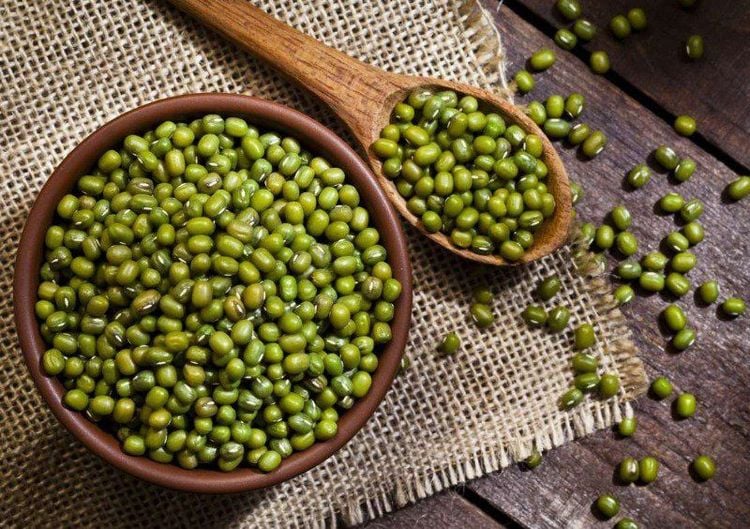
Thị lực của bạn cũng sẽ được cải thiện nếu bạn ăn đậu xanh
In general, beans are one of the healthiest foods. Chickpeas are full of important nutrients, and they make a healthy addition to your meals.
2.11. Regulates Urine Flow and Heals Eczema Chickpeas can also promote normal urine flow thanks to its peel, which is considered a moderately potent diuretic. Typical diuretic support ensures that you maintain successful removal of harmful toxins from the body. Chickpeas may also be known for its herbal advantages. For example, chickpea powder can be used to deal with eczema simply by placing it on the affected area to relieve itching in addition to aiding in drying out your skin, making it significantly less itchy.
2.12. Boost your body's metabolism If you are looking to improve your metabolism in order to lose fat as well as improve your health, then you definitely want to start eating green beans regularly. In each type of green bean supply there are actually minerals like magnesium, calcium, iron as well as manganese, all of which have been linked to improving one's metabolism. In addition, chickpeas have potassium, which has been shown to help reduce an unhealthy heart rate and lower blood pressure levels. It is clear that chickpeas have a number of beneficial health benefits for those who consume them, so you should start consuming chickpeas to improve your lifestyle as well as your overall health.
2.13. Impact on cholesterol If you suffer from high cholesterol levels, then you can certainly reduce it by consuming green beans every day. Chickpeas are a lower cholesterol food and are also high in fiber. This refers back to the fiber particles that are difficult to absorb in food. Fiber is of two types: soluble and insoluble. Insoluble fiber helps to stabilize bowel movements. However, little was found of assistance in lowering blood pressure levels. Soluble fiber, when combined with water in the digestive tract inevitably forms a jelly-like substance that normally helps maintain vital body functions.
A fiber-rich food that is recognized to lower LDL cholesterol (bad cholesterol) simply by increasing the production of LDL sorbents commonly used to remove excessive LDL cholesterol from the blood. We recommend getting 10 to 25 grams of “soluble” fiber per day to lower your LDL cholesterol. One serving of chickpeas includes 1.9 grams of total "soluble" fiber, which is suitable for use. Chickpeas can be combined with various fibrous foods to lower LDL cholesterol levels even more.
2.14. Post-menopause Legumes, like chickpeas, include isoflavones nutrition. This particular nutrient aids in controlling hormonal activity. Isoflavones are actually several phytoestrogens, which give chickpeas its natural estrogenic properties. Chickpeas consist of about 495.1 micrograms of chickpeas including phytoestrogens, making for a great way to get phytoestrogens. In a 12-week trial, phytoestrogens were able to ease hot flashes that are bothersome and difficult to change. Supplementing with 90mg of phytoestrogens per day may help postmenopausal women avoid the negative effects of brittle bones simply by restoring bone growth.
3. Side effects
The side effects worth mentioning of chickpeas can be attributed to the presence of lectins and phytates. These compounds, called antinutrients by researchers, are usually produced to protect plants from infection. But in the human body, these substances can inhibit the absorption of certain nutrients, including calcium, iron, zinc and magnesium.Another side effect is that they contain a lot of hard to digest starch that people with stomach problems such as bloating, gas or people with symptoms of IBS (restlessness syndrome) cannot tolerate. .
Soaking or boiling green beans before eating can neutralize most of these antinutrients.
Another side effect worth mentioning is the vitamin K content in green beans. The nutrient forms blood clots and can interfere with blood-thinning medications, including Warfarin.
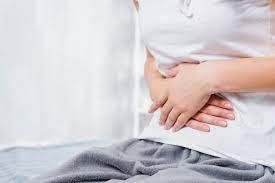
Nếu bạn ăn quá nhiều đậu xanh bạn có thể bị đầy bụng
4. Allergies
According to the American Academy of Allergy, Asthma and Immunology, allergies to legumes are quite rare and are most common to peas or lentils, rather than chickpeas. However, a few cases of mung bean allergy have been reported in the medical literature, and at least one of the allergenic proteins in chickpeas has been identified. 7Symptoms of a food allergy may include itchy or swollen face, difficulty breathing, asthma, stomach upset, nausea or vomiting. If you suspect you have an allergy to chickpeas or another food, talk to your healthcare provider for an accurate diagnosis.
Please dial HOTLINE for more information or register for an appointment HERE. Download MyVinmec app to make appointments faster and to manage your bookings easily.
References: healthline.com, verywellfit.com, stylecraze.com





